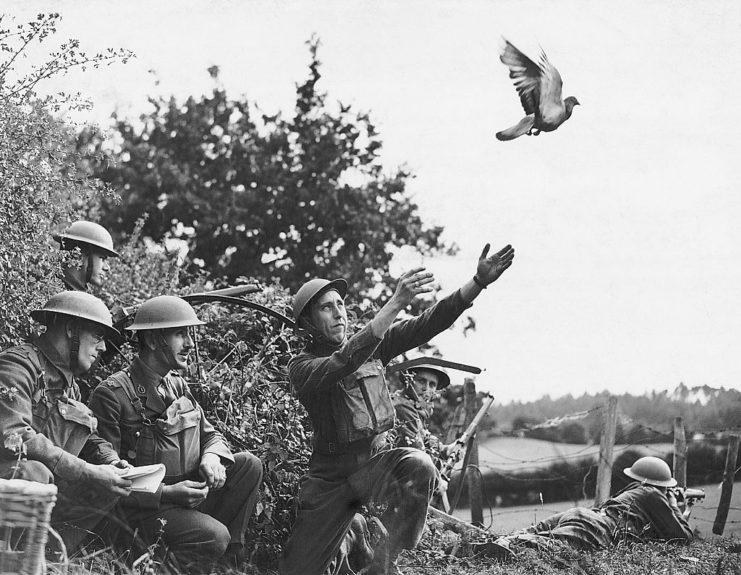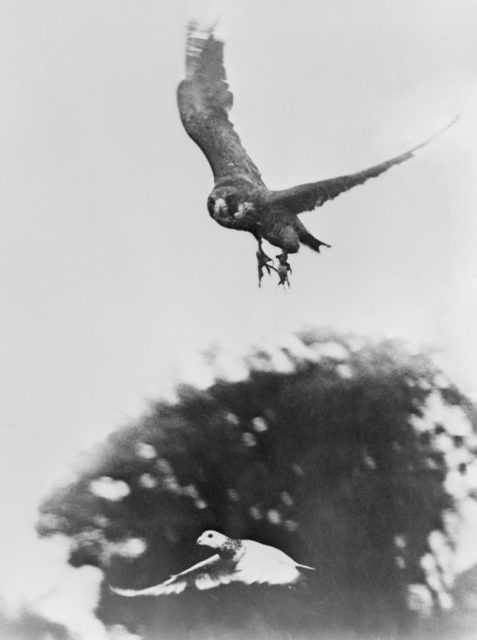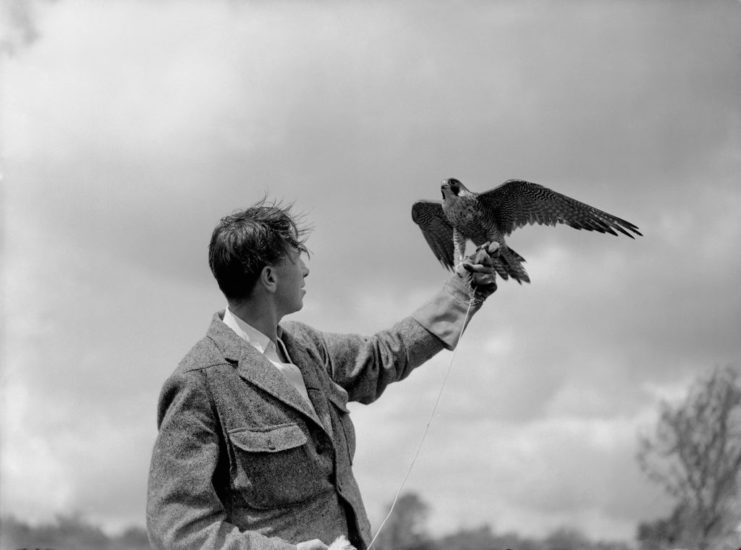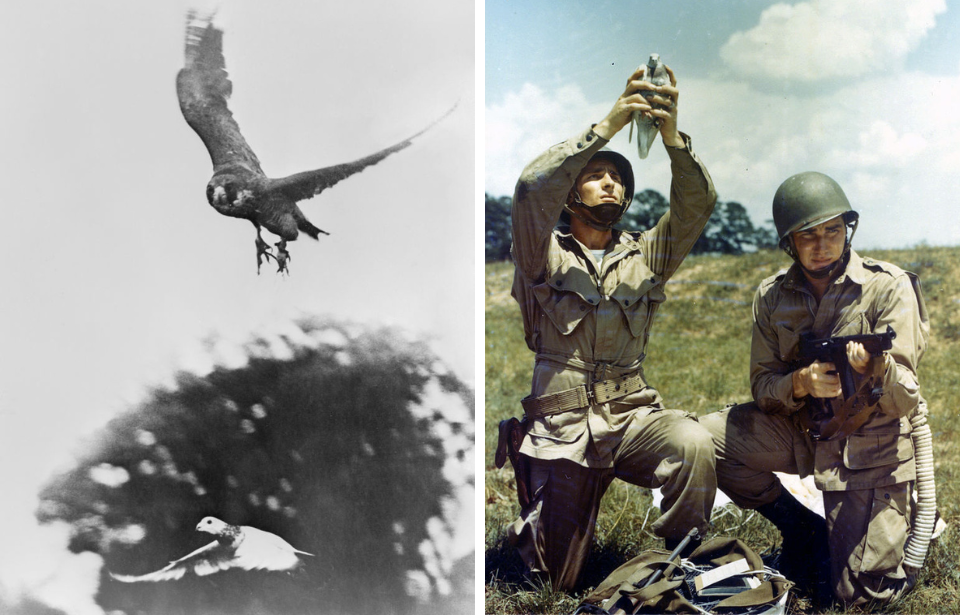The use of pigeons on the battlefield is often associated with the First World War. Homing pigeons, in particular, were used the most, with the US Army Signal Corps alone deploying around 600 in France. Despite many technological advancements, they saw continued use throughout the Second World War.
Just like any other weapon or technology, these birds were considered to be a danger. The MI5 dealt with them by recruiting the very creature known for taking out the domestic pigeon population: the peregrine falcon.
Use of pigeons during the Second World War
Pigeons were deployed by both the Allied and Axis powers during World War II. The German military command was extremely interested in using the species and took control of the country’s pigeon lofts. Throughout Germany and occupied areas, they were primarily used for communication purposes.

The Allies also used carrier pigeons. The British, for example, had roughly 200,000 donated for use in the National Pigeon Service, while the Americans had 54,000 in the US Army Pigeon Service. The Allied forces dropped the birds into occupied territories with requests for information, and used them to share news from the frontlines.
MI5’s Falcon Destruction Unit
British pigeons ran into difficulties during the war while flying back to the United Kingdom. They were returning home with important information, yet were being picked off by peregrine falcons that lived in abundance along the coast. Some even believed the falcons had been specially trained and deployed by those with German ties, although this is unconfirmed.
Gordon Corera, author of Secret Pigeon Service: Operation Columba, Resistance and the Struggle to Liberate Europe, told The Daily Mail, “In the slightly strange world of pigeon intelligence there were also wild hawks and peregrine falcons on the British coast that would kill some of these pigeons coming back from occupied Europe with messages.”

To fix the problem and defend the pigeons, the MI5 created the Falcon Destruction Unit. Led by a retired colonel, the team of five traveled along the British coast, with the goal of removing the falcons they found nesting on cliffs or in traps. The rest were shot.
Specially-trained falconry team
The rogue falcons were just one avian concern for the British during the Second World War. Another was that the Germans were deploying their own pigeons to Britain with information, although the reason why remains unclear (there are some who believe the birds never existed in the first place). Nonetheless, the MI5 was given permission to establish a special falconry unit to train the very species that was killing the domestic pigeon population.

The team and their falcons trained for five weeks before being sent to the Isles of Scilly, where they spent the summer trying to catch the supposed German pigeons. According to Corera, “One would stand at the highest point of the course, another across the island on the coast – hardly the worst job in summer – looking out for enemy pigeons, their falcons ready on their wrists to let slip.”
More from us: Van Barfoot: MoH Recipient Who Singlehandedly Captured 17 German Soldiers and Disabled a Tiger Tank
While there, the team was even supplied with pigeons, so the falcons could continually hone their hunting skills. Despite their efforts, however, the mission was a colossal failure. By the end of the war, the birds hadn’t eliminated any enemy pigeons, only their own, likely because there were never any to begin with.
